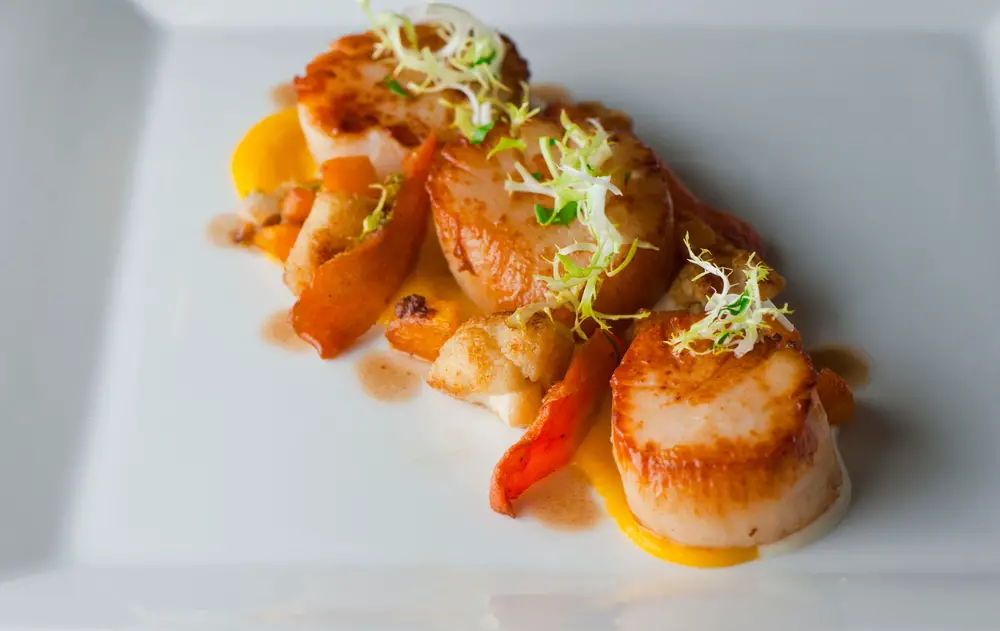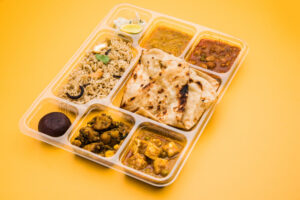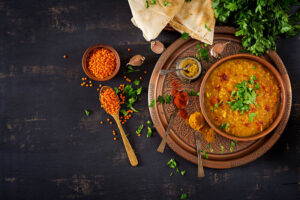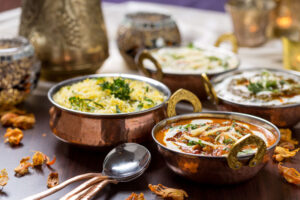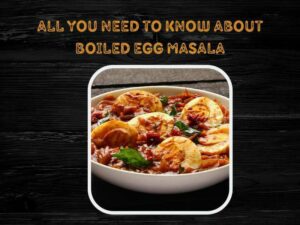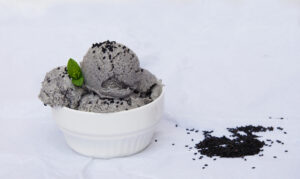One of the greatest gifts the sea ever gave to cooks everywhere is the seemingly humble scallop.
Less daunting than an oyster, less work than a lobster, the scallop sits just in the comfort zone of home cooks everywhere, and you can do a ridiculous number of gorgeous, flavorful things with it.
There are people who will tell you that you never need to do anything clever or fancy to a scallop – cook it just briefly till the translucence appears to be turning, flip them once to caramelize both sides, and boom, you’re good to go.
These people have a point – scallops cooked that way are sumptuous and encourage gluttony, they’re so eminently edible. The same, though, is pretty much true of any preparation of scallops.
The one thing about scallops though is that their flavor is sweet but delicate. The worst thing you can do to the scallop is to mask that delicacy with rich creamy sauces or too much heat.
Also, they take a certain amount of delicacy in the cooking, because it’s all too easy to turn a succulent scallop into an unappetizing hockey puck.
With that in mind, many people in the West wouldn’t necessarily associate a wok with delicate cooking.
Many people in the West have a lesson to learn.
There’s intense heat in a wok, to be sure, but the technique of stir-frying means fast cookery, rather than necessarily overcooking.
Certainly, scallops are a hugely popular dish in Chinese cuisine, and there are any number of Chinese scallop recipes that will serve you proud, and make your guests refuse to leave.
But if I absolutely had to choose one Chinese scallop recipe to sum up the philosophy of Chinese cooking and how it gets the best out of scallops, it would have to be:
Scallops With Ginger and Scallions
Before we begin, a confession. While this is a Chinese dish (check out our chinese pizza recipe), and you will need a wok for it, the main scallop cookery will take place in a relatively modern non-stick pan. That’s only so you can get the quick cooking and the caramelization on both sides of the scallop.
You can, if you like, give the scallops a touch of wok hay at the end, to really complete the Chinese feel of the dish, but as we said, because of the intense heat of the wok, you’re going to want to make that very quick – enough to breathe the breath of the wok, but not enough to suffocate the subtle sweetness of the scallop.
Also, while we’re here, let’s talk about sex.
Traditionally in US cuisine, when people cook scallops, they take off the roe. The what-now? Usually, it’s either a coral-colored or off-white element, attached to the scallop itself.
Americans generally either get squeamish about the texture of the roe, which is softer than the scallop itself, a little like liver, or they get squeamish when you tell them what it is. What it is… is the scallop’s sex organ. Coral-colored in the females, off-white in the males.
You’re welcome, for that knowledge.
The point is that it’s frequently eaten in plenty of other cuisines, and probably, unless you tell your guests what we just told you, they won’t question that they’re supposed to eat it in this dish.
If you can get scallops with the roe attached, not only did you just double your yield by weight, you just included some of the most succulent seafood (another of which is our delicious Chinese Seafood Delight Recipe) you can get.
We’re just saying, cook the roe, serve the row, eat the roe by all means – it’s delicious. Just, maybe, don’t tell your more squeamish friends what they’re eating. They’ll be fine.
Equipment:
- 1 wok
- 1 non-stick frying pan Ingredients:
- 10 ounces scallops (as mentioned, with the roe if possible)
- 10 ounces cooked vermicelli noodles
- 8 scallions, cut into 1-inch lengths
- 1 piece of ginger, roughly the size of a thumb, peeled and finely chopped
- 1 tablespoon of soy sauce
- 1 teaspoon of vegetable oil for brushing
Method:
- Brush the top side of your scallops lightly with vegetable oil
- Separate the roe from the scallops but retain the roe. Come on, be brave
- Put some of the vegetable oil in your wok but retain just a little for later scallop-brushing.
- Heat the oil in the wok until it reaches its smoke point – you should start to see wisps of smoke coming off the oil
- Put your non-stick pan on a medium heat
- Take a deep breath – you’re about to engage in two-handed cooking
- Add the ginger to the smoking wok. Stir-fry it for a minute
- Add your scallions, your vermicelli noodles, and your soy sauce. Stir for another 2-3 minutes max – more than that and your noodles will go from toothsome to limp, and nobody, but nobody, wants a limp noodle
- While you’re stirring, put the scallops, oiled-side-down into the non-stick pan, ideally giving them a little personal space apiece
- The scallops need to be seared for a minute. While they’re searing, brush the new top sides lightly with oil
- Don’t stop stir-frying the ginger, noodles, and scallions
- Turn the scallops over to get their new top sides caramelized. Timings differ on how long you should cook the second side. Some cooks go for another minute, some say the heat has penetrated far enough during the initial minute that you can get away with just 30 seconds on the second side
- Remove the scallops from the pan
- Add the roe to the pan and fry it for a minute
- Serve the noodles and scallions. You can serve the ginger too if you think your guests will dig the pop of heat it brings
- Optional: add the scallops to the wok and move them gently around for 15-20 seconds, no more. You don’t want hockey pucks, remember, but if you want the wok hay in your scallops, just let them breathe the essence of the wok for a handful of heartbeats
When you serve the scallops on top of the noodles, they will be practically perfect. You shouldn’t exactly need to add any seasoning – after all, the soy sauce will be bringing the salt, and the ginger will bring some heat.
If you want a touch of something else, either give them one turn of cracked black pepper, or if you want to turn up the game a little, a small, small… no, smaller than that – twist of Szechuan pepper can give the dish an extra kick. Remember not to overpower the sweetness of the scallops and you’ll be fine.
